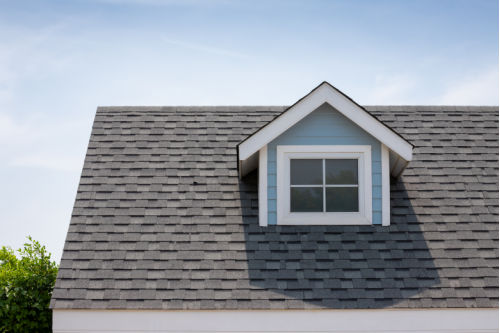Will the Age of My Roof Impact My Homeowners Insurance?
October 2022 by Heartland Roofing Siding and Windows
One of the main factors that determine your homeowner’s insurance rate is roof age. As you probably know, roofs are pretty expensive to repair or replace, so it makes sense that this would be a factor in determining how much you’ll pay for homeowners insurance and what it will or won’t cover.
The type of roof also plays a role in how an older roof can impact your rates because some types of roofs are more costly than others. We’ll get into all of that and more as we discuss how the age of your roof can affect your insurance rates and coverage.
How Long Does a Roof Last?
Roof’s aren’t built to last forever, but some can get close. Different roofing materials last longer than others. Here is the expected lifespan of each roofing type:
Asphalt Shingles: 15 to 30 Years Asphalt shingles are the most used roofing material in America and last for around 20 years on average. This doesn’t mean that a roof will need to be replaced at this time, but it does play into your insurance rates and coverage because 20 years is close to being considered “old”.
Flat Roof: 20 to 50 Years There are many different types of flat roofing materials, but for the most part, you can expect a flat roof to last anywhere from 20 to 50 years. The life expectancy of a flat roof is mainly dependent on its material and how it’s installed and maintained over time.
Wood Shakes: 35 to 40 Years Wood shakes are incredibly durable, but only when they’re properly maintained. Wood shingles tend to last around 35 to 40 years on average before needing replacement, if you maintain them and let any damage go unfixed for too long, you should be set for a while.
Metal Roofing: 50 to 75 Years Metal roofing is an increasingly popular alternative to asphalt shingles. It’s incredibly durable and costs less than other types of roofs, but it lasts longer as well — around 50 years on average, but up to 75 years with proper installation and maintenance.
How Does the Age of My Roof Affect Insurance Rates and Coverage?
There are three different ways your roof can significantly affect your insurance premiums. The age, condition, and location of your roof can all affect your insurance cost and coverage.
Your Roof’s Age: As we mentioned before, older roofs are usually more expensive to replace and insure. As your roof ages, your insurance premium may increase because your roof is at higher risk for damage every year, which costs the insurance companies more money when your damaged roof needs to be replaced. So, they may try to cover their butts by refusing coverage, raising rates, or even canceling your policy if your roof is years past its expected lifespan.
Your Roof’s Condition Regular wear and tear are unavoidable but maintaining the condition of your roof is critical to upholding its integrity and keeping your premiums low. A roof in poor condition is much more likely to have a claim denied. Damage due to negligence and wear and tear is seldom covered via a standard insurance policy, so you must take the necessary precautions to maintain it each year.
In fact, there are eight different insurance policies that cover different property types and coverage needs.
The eight types of homeowner’s insurance are:
- HO-1: The most basic type of insurance policy for single-family homes.
- HO-2: This policy is an upgrade from HO-1 policies, covering six more types of damage.
- HO-3: Most homeowners have an HO-3 policy with broader coverage than the previous two.
- HO-4: This policy type is for renters, not homeowners.
- HO-5: The most comprehensive policy and is the second most popular policy type for single-family homes.
- HO-6: This policy type is strictly for condominium owners.
- HO-7: This policy type is for those who own mobile or manufactured homes.
- HO-8: For homeowners who don’t meet any of the other standards, they can get an HO-8 policy that focuses more on the home’s actual cash value vs. the cost of replacement. It also covers much fewer instances of damage.
What You Can Do to Mitigate Risk
In summary, to combat higher insurance rates, you can:
- Perform regular inspections and maintenance
- Know when it is time to replace your roof
- Do your research before choosing a roofing material to avoid added costs or limited coverage
- Read your insurance policies very thoroughly, so you know what to expect
The good news is, if you are looking to replace your roof for any reason, we can help you navigate the insurance process and get you the coverage you need to get the job done. We will work with you and your insurance company during the claims process and recommend the best action plan. Plus, you can get peace of mind with our wonderful warranties that cover your roof for years to come. Contact Heartland Roofing Siding and Solar right away to get your FREE roofing quote!

